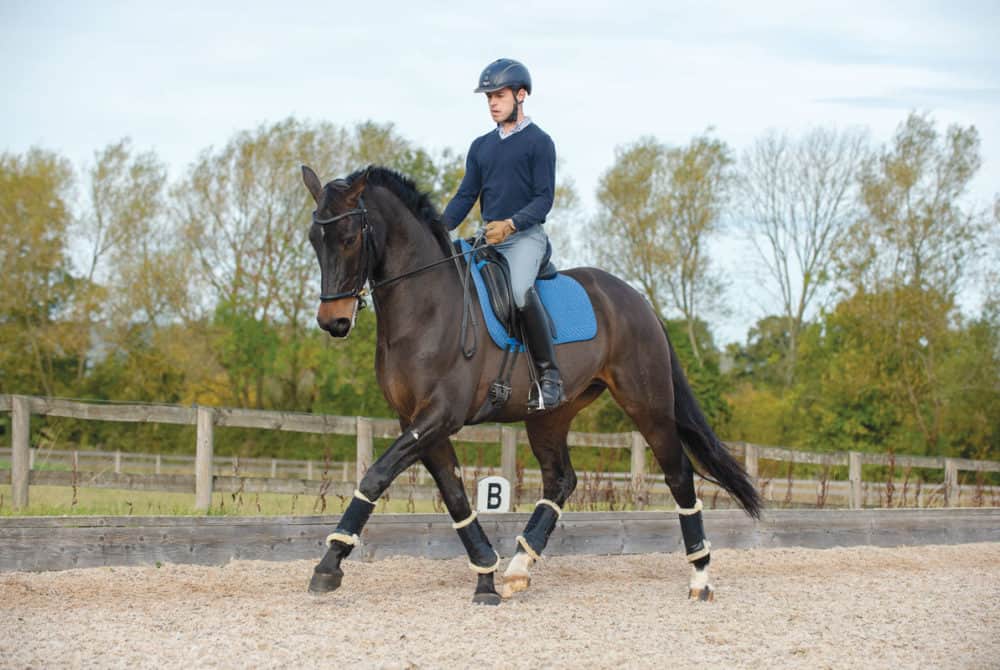Understanding engagement
Posted 18th July 2019
The secret to dressage success is getting the basics right. Dan Greenwood explains how

Engagement, impulsion and contact are three of the most fundamental elements of dressage – without them, you’ll find it much harder to produce movements, create expression and stand out in front of the judge. But as crucial as these three concepts are, they’re also the most elusive. How many times have you read your test sheet, only to find comments such as ‘horse not working through his back’, ‘tension’, or ‘not consistent in contact’, or found the submission collective circled? All of these are universal symptoms of common problems that the majority of riders face.
Solving these problems, and establishing a correct, fluid way of going, requires going back to basics. But that doesn’t mean you have to drop back down the levels, or take a break from competing while you struggle back up the rungs of the ladder. Instead, it requires you to break down each concept into simple, straightforward objectives that are easy for you and your horse to understand and begin to master. Then, you’ll be able to build upon them and make them as natural as, well, riding a horse.
The rules of engagement
This month, we’ll be looking at the first of these concepts: engagement. If you look at the classic scales of training, you’ll notice that the two bottom scales – the flatwork foundations – are rhythm and relaxation. Pretty simple, right? In creating a steady tempo, you ensure your horse is moving forward naturally – not being kicked on in an attempt to get him in front of the leg, nor being pulled back to try to collect him. Relaxation comes hand in hand with this. The quality of your horse’s movement is dependent on allowing him to move forward naturally – then, you can begin to ask for more expression and really explore his potential.
So what, exactly, is engagement? Well, your horse is engaged when his hindleg steps further underneath his tummy, allowing his weight to shift back and his forehand – his shoulder and neck – to lift. Really advanced engagement is seen in top level movements such as passage and piaffe, in which the hindleg touches down underneath the rider, and the whole impression is of a horse who’s climbing a staircase. But you certainly don’t have to be riding at that level to incorporate this essential element into your riding – it can be taught from the earliest stages, and will pay dividends whether you’re riding on the flat or over fences.
In September Horse&Rider, on sale 25 July, Dan shares two great exercises to help you engage your horse – pick up your copy today.










